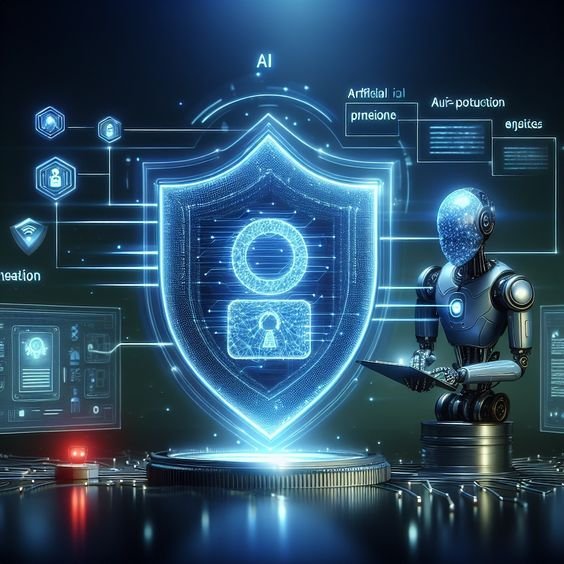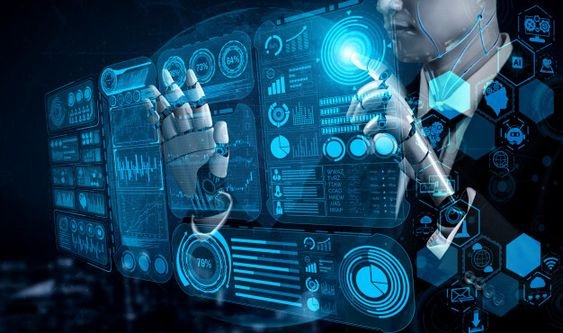
In the modern world, our lives have become deeply intertwined with the digital realm. From social media and online shopping to banking and communication, much of our daily activities are conducted online. While this connectivity brings convenience and efficiency, it also raises significant concerns about personal data security. In this article, we’ll explore the importance of protecting personal data in the digital age, the threats we face, and practical steps individuals can take to safeguard their information.
Understanding Personal Data
Personal data refers to any information related to an identifiable individual. This can include basic details like name, address, and date of birth, as well as more sensitive information such as social security numbers, financial data, medical records, and even online behavior. In the digital age, personal data is often collected and stored by various entities, including companies, government agencies, and social media platforms. This data can be used for multiple purposes, from improving user experiences to targeted advertising.
The Importance of Protecting Personal Data
Protecting personal data is crucial for several reasons:
1. Privacy: Personal data often includes sensitive information that individuals may not want to be publicly accessible. Protecting this data helps maintain privacy and ensures that personal details are not misused or exploited.
2. Security: Cybercriminals can use personal data to commit identity theft, fraud, and other malicious activities. By protecting personal data, individuals can reduce the risk of becoming victims of such crimes.
3. Trust: Companies and organizations that handle personal data must protect it to maintain customer trust. Data breaches and security incidents can damage an organization’s reputation and result in significant financial losses.
4. Legal Compliance: Many countries have laws and regulations that require organizations to protect personal data. Failure to comply with these laws can lead to severe penalties and legal consequences.
Common Threats to Personal Data
The digital age has brought about various threats to personal data security. Some of the most common threats include:
1. Data Breaches: A data breach occurs when unauthorized individuals gain access to a system or database, compromising the data stored within. Breaches can result from hacking, weak security measures, or insider threats.
2. Phishing Attacks: Phishing is a type of cyberattack where attackers use deceptive emails, messages, or websites to trick individuals into revealing sensitive information. These attacks often target login credentials, financial information, or personal details.
3. Malware: Malware is malicious software designed to infiltrate systems and steal or damage data. Common types of malware include viruses, ransomware, spyware, and trojans.
4. Social Engineering: Social engineering involves manipulating individuals into divulging confidential information. Attackers may pose as legitimate entities, such as banks or government agencies, to trick individuals into providing personal data.
5. Unsecured Networks: Public Wi-Fi networks, often found in cafes, airports, and hotels, can be insecure. Hackers can intercept data transmitted over these networks, potentially gaining access to personal information.
Practical Steps to Protect Personal Data
Protecting personal data requires a combination of awareness, good habits, and the use of technology. Here are some practical steps individuals can take to safeguard their information:
1. Use Strong, Unique Passwords: A strong password is the first line of defense against unauthorized access. Use a combination of upper and lower case letters, numbers, and special characters. Avoid using easily guessable information like birthdays or common words. Additionally, use unique passwords for different accounts to prevent a single breach from compromising multiple accounts.
2. Enable Two-Factor Authentication (2FA): Two-factor authentication adds an extra layer of security by requiring a second form of verification, such as a code sent to your phone, in addition to your password. This makes it more challenging for attackers to gain access to your accounts.
3. Be Cautious with Personal Information: Be mindful of the information you share online, especially on social media. Avoid posting sensitive details like your address, phone number, or financial information. Additionally, review privacy settings on social media platforms to control who can see your posts and personal information.
4. Update Software Regularly: Keep your operating system, apps, and antivirus software up to date. Regular updates often include security patches that fix vulnerabilities and protect against new threats.
5. Use Secure Connections: When shopping online or accessing sensitive information, ensure the website uses HTTPS, indicated by a padlock icon in the address bar. Avoid using public Wi-Fi networks for financial transactions or accessing sensitive data. If you must use public Wi-Fi, consider using a virtual private network (VPN) to encrypt your data.
6. Be Wary of Phishing Scams: Be cautious of unsolicited emails, messages, or phone calls asking for personal information. Verify the legitimacy of the request by contacting the company or organization directly using official contact information. Avoid clicking on links or downloading attachments from unknown sources.
7. Monitor Your Accounts: Regularly review bank statements, credit card bills, and online accounts for suspicious activity. Report any unauthorized transactions or discrepancies immediately.
8. Use Encryption: Encryption is a method of converting data into a coded format, making it unreadable to unauthorized users. Use encryption tools to protect sensitive files and communications, especially when sending data over the internet.
9. Secure Your Devices: Protect your devices with passwords, PINs, or biometric authentication (e.g., fingerprint or facial recognition). Enable remote tracking and wiping features on smartphones and laptops to protect your data in case of loss or theft.
10. Educate Yourself: Stay informed about the latest cybersecurity threats and best practices for protecting personal data. Many resources, including online courses, articles, and workshops, are available to help you improve your knowledge and skills.
The Role of Organizations in Protecting Personal Data
While individuals play a crucial role in protecting their personal data, organizations also have a significant responsibility. Companies and institutions that collect and store personal data must implement robust security measures to prevent data breaches and unauthorized access. Some of the key practices organizations should follow include:
1. Data Encryption: Organizations should encrypt sensitive data at rest and in transit to protect it from unauthorized access. Encryption ensures that even if data is intercepted, it cannot be read without the decryption key.
2. Access Controls: Implementing strict access controls ensures that only authorized personnel can access sensitive data. This includes using strong authentication methods, regularly updating access permissions, and conducting audits to monitor access.
3. Data Minimization: Organizations should collect only the minimum amount of personal data necessary for their operations. By reducing the amount of data stored, they minimize the risk of exposure in case of a breach.
4. Regular Security Audits: Regular security audits help identify vulnerabilities and weaknesses in an organization’s systems and processes. Addressing these issues proactively can prevent potential security incidents.
5. Employee Training: Employees should be educated on data security best practices, including recognizing phishing attempts, handling sensitive information, and responding to security incidents. Ongoing training helps ensure that employees remain vigilant and aware of potential threats.
6. Incident Response Plan: Organizations should have a well-defined incident response plan to address data breaches and security incidents. This plan should include steps for containing the breach, notifying affected individuals, and mitigating the impact.
7. Compliance with Data Protection Laws: Organizations must comply with relevant data protection laws and regulations, such as the General Data Protection Regulation (GDPR) in the European Union or the California Consumer Privacy Act (CCPA) in the United States. Compliance includes implementing appropriate security measures, providing transparency about data collection practices, and respecting individuals’ rights regarding their data.
Conclusion
Protecting personal data in the digital age is a shared responsibility between individuals and organizations. As we continue to embrace digital technologies, we must remain vigilant and proactive in safeguarding our information. By understanding the threats we face and implementing practical security measures, we can protect our privacy, maintain trust, and ensure a safer digital experience for everyone.
Remember, personal data is valuable, and protecting it is essential to maintaining our security and privacy in an increasingly connected world. Whether you’re an individual or an organization, taking steps to secure personal data is an investment in a safer and more secure future.
ALSO READ: Supervised vs. Unsupervised Learning: Key Differences









